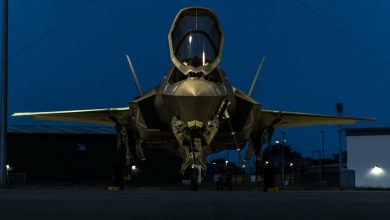Analysis: Space; the final frontier of U.S.-China competition

Washington and Beijing can write agreeable and mutually beneficial rules for the final frontier to encourage landmark discoveries instead of conflict.
ith the International Space Station scheduled to be decommissioned by 2024, Beijing will soon be the sole operator of such a station in the cosmos. China’sTiangong Space Station is expected to be completed later this year
Undoubtedly, Tiangong plays a major role in Beijing’s quest for leadership in space, but it is just the tip of the iceberg. Other initiatives—including the planned International Lunar Research Station and expanding offensive satellite capabilities—threaten the United States’ leadership in space, often to the detriment of its national security. For Beijing, however, its success in space has been a long time coming.
Beijing’s Grand Strategy in Space
Beijing’s three-phase space strategy began in 1992 when the Manned Space Program was launched to develop and perfect China’s spaceflight capabilities. The first phase entailed launching a manned aircraft into outer space and returning its crew safely back to earth—a feat which was achieved in 2003. Phase two involved advancing activities in space that would eventually support a long-term space station. These included extravehicular activities, rendezvous and docking operations with Tiangong’s prototype predecessors, and landing a rover on Mars. When China completes the Tiangong Space Station later this year, it will have completed phase three—marking the achievement of the CMSP after thirty years of work.
So, what comes next? According to Beijing: building a base on the moon with its good friends from Moscow. The International Lunar Research Station —announced in 2021—will allow Chinese and Russian astronauts to conduct research and exploration on the lunar surface and in space. Like Beijing’s broader space plan, the ILRS has three phases: reconnaissance (2021-25), construction (2026-2035), and utilization (2036 onward). Even after Tiangong is completed, it seems China has no intention of slowing down its efforts in the final frontier. Beijing has completed its long march to space, and it intends to stay.
Catching Up to the United States
In addition to its symbolic significance as the climax of Beijing’s thirty-year space strategy, the Tiangong’s improvements exemplify Beijing’s commitment to closing the gap with the U.S. space program, often to the detriment of U.S. national security. In anticipation of Tiangong’s completion, analysts in Washington should have three principal concerns: the closing space research gap between the United States and China, the Chinese Communist Party’s aspiration to revise the liberal international order, and Beijing’s growing offensive capabilities in space.
Closing the Space Research Gap
With its advanced research capabilities, Tiangong’s attachments and the ILRS are China’s best options to close its space research gap with the United States.
According to a 2021 white paper, one of the main objectives of China’s space program is to “explore outer space to expand humanity’s understanding of the earth and the cosmos.” The Wentian and Mengtian experimental module attachments—which connect to the core module, Tianhe—were created to fulfill that objective; both modules will contain more than twenty experimental racks, creating an ideal environment to conduct further space exploration. In 2024, the Chinese Space Station Telescope (CSST) will also support this objective. Once attached to Tiangong, the CSST’s field view is expected to be 350 times larger than the Hubble Space Telescope. According to the Chinese Academy of Sciences, the CSST’s Survey Camera’s thirty eighty-one-megapixel detectors will be able to help scientists achieve advanced research objectives in dark energy, dark matter, and galaxy evolution.
China’s ILRS—a planned lunar base announced in 2021— poses a threat to U.S. space leadership and serves to widen the research gap between the two countries. For starters, it is a joint venture with Roscosmos—Russia’s national space program—a testament to Xi Jinping’s claim that Beijing’s partnership with Moscow truly “has no limits.” The ILRS also stands in direct confrontation with the U.S.-led Artemis Accords, which seeks to build its own coalition of countries and develop a set of principles to govern space exploration. One point of contention has been lunar “safe zones,” or regions of the moon that other countries should avoid to lessen the potential for harmful interference. While these zones are an integral provision of the Artemis Accords, Chinese state media has disparaged them as “divisive, hegemonic schemes.”
Rewriting the Liberal International Order
Beijing sees its advancements in Tiangong, the ILRS, and small satellites as part of its strategy to rewrite the rules of conduct in outer space; thus far, the only binding pacts are the broad Outer Space Treaty and a view associated with agreements and conventions from the Cold War era. But Beijing’s attempts to flout international norms shouldn’t surprise Washington. In fact, China’s space program can be viewed as an extension of Xi Jinping’s diplomatic campaigns back on earth.
Last fall at the United Nations General Assembly, Xi launched his Global Development Initiative —a campaign to re-prioritize international development that is “beneficial for all.” While it may seem innocuous, the GDI presents itself as an alternative to Western-style aid which Beijing claims comes “with strings attached.” More concerning, at April’s Boao Forum for Asia, Xi unveiled a corresponding Global Security Initiative . In speeches by Xi and Chinese foreign minister Wang Yi, the GSI was touted as prioritizing partnerships over alliances, win-win cooperation over zero-sum solutions, and true multilateralism over hegemony—all clear stabs at Washington. Perhaps most significantly, the GSI champions “indivisible security”—a concept used by Vladimir Putin to justify his war in Ukraine. Both initiatives are undoubtedly filled with blatant hypocrisy, but Washington should take them seriously. While far from ubiquitous, both have supporters—primarily in Africa and Latin America—providing ideological legitimacy for Beijing’s alternative vision to the present liberal international order.
China’s space program is a continuation of its efforts to reshape the global order to make it more conducive to Beijing’s interests. As the soon-to-be sole operator of a long-term station in outer space, Beijing will have a corner on all astronomical research that requires such a facility, thus giving it leverage to control the activities and rules of space. Since 2008, China has also been signing space-related cooperation agreements with governing bodies in Pakistan, Russia, the European Commission, and Malaysia under this pretense. These efforts were amplified after NASA forbade Chinese participation in the International Space Station in 2011. Now, as one expert noted, “when China invites other countries to its own space station, then of course China will be the leader” and control their activities.
China’s Offensive Capabilities in Space
China’s advances in space are particularly threatening to the United States, as Chinese leaders ardently promise to defend their assets against perceived risks from U.S. space infrastructure. In 2021, China’s permanent mission to the United Nations presented a note on close-calls between the U.S. company SpaceX’s Starlink and Chinese satellites, pointing out “dangers [posed] to the astronauts aboard the China Space Station.” Chinese scientists have even called for Beijing to “vigorously develop new disposal methods [for Starlink satellites] in order to obtain and maintain advantages in the fierce space game.”
In response to perceived threats from Starlink, CNSA initiated trials of its artificial intelligence (AI)-enabled deception and pursuit satellite software. The AI was able to control three hunting satellites to approach and—after 10,000 trials—effectively capture a target satellite. It also learned to detect and evade pursuit from other hostile satellites. The presence of Chinese AI systems like this one has made space a much more dangerous place, particularly for the United States which relies on its satellites for critical military activities.
Tiangong’s robotic arm attachment has also stoked worries about China’s offensive space capabilities. Measuring a staggering thirty-three feet, not only is the arm capable of moving over 44,000 pounds but, according to the commander of the U.S. Space Force John Raymond, the arm could be used “in future systems for grappling other satellites.” Simply put, Tiangong’s robotic arm attachment and the advancements in anti-satellite software have the potential to degrade or render unusable American satellites.
A Challenge and an Opportunity
While Tiangong and other space projects undoubtedly pose threats to U.S. leadership in space, they also pose an important opportunity. Much has been said about how competition with China can inspire the United States to become the best version of itself, and nowhere is this more true than in outer space. Just as the Sputnik launch inspired the United States to put a man on the moon at the height of the Cold War, so too can this Tiangong moment inspire a new generation of American leadership in space. If this is to be a reality, however, the United States needs to redouble its efforts in space by championing the Artemis Accords, developing ground rules for AI dangers in space, and proactively communicating with the CNSA and leaders in the Chinese Communist Party.
Undoubtedly, the twenty-first century is primed to be a time of great material progress—thanks in part to efforts in the United States and China. But another challenge proceeds in lockstep with Washington’s quest to outcompete Beijing, both in space and on earth: to do so without precipitating an all-out war. Amid space stations and lunar landings, the greatest discovery of the next decade will be a structure to resolve Sino-American disputes without resorting to mutual mass slaughter. A good start would be to cooperate in space. Washington and Beijing can write agreeable and mutually beneficial rules for the final frontier to encourage landmark discoveries instead of conflict. Given that both countries have expressed a desire to work together to address the growing amount of space debris and establish formal lines of communication, cooperation could be on the horizon. This is the challenge that the United States must be willing to accept without further postponement.





